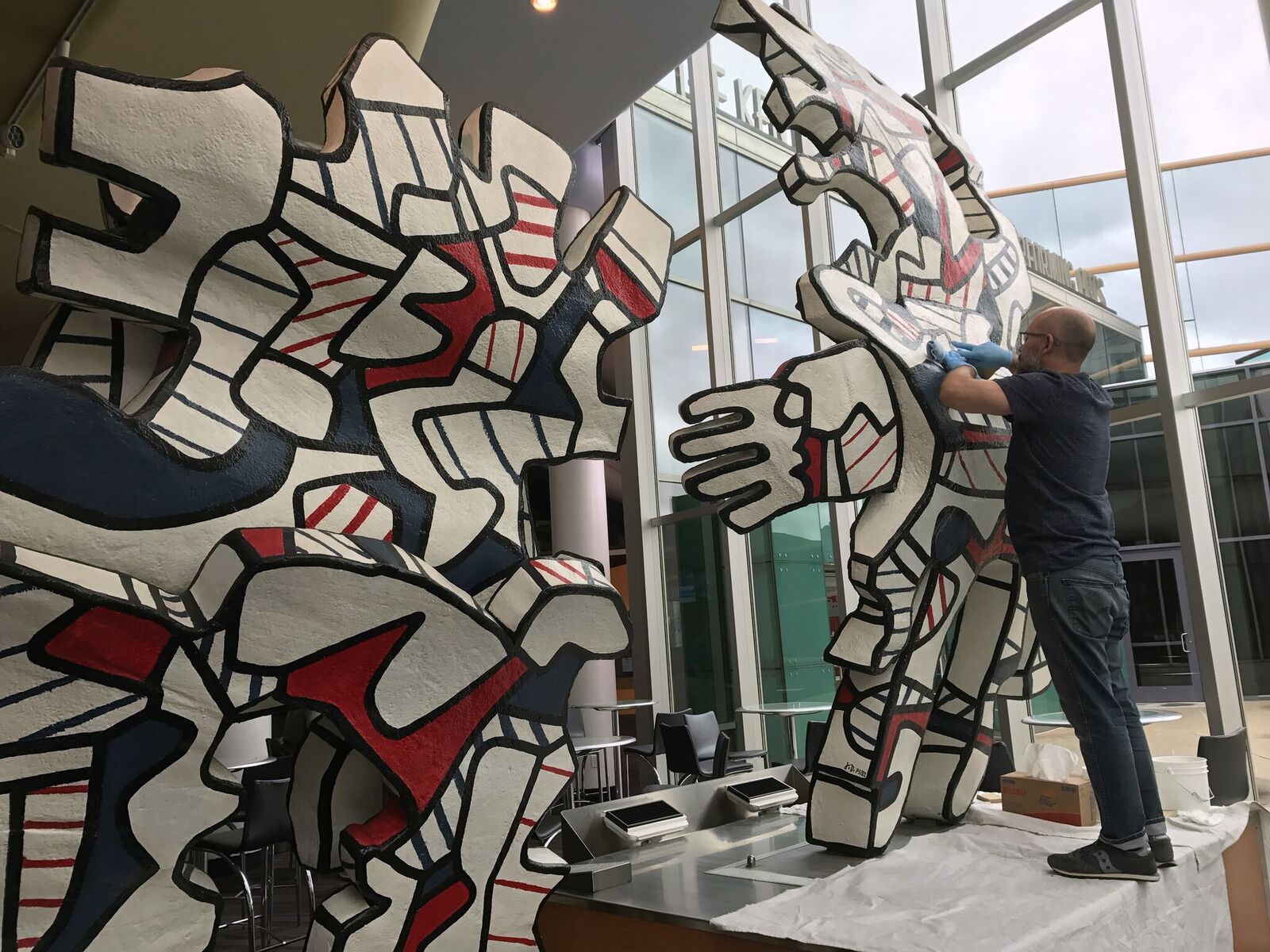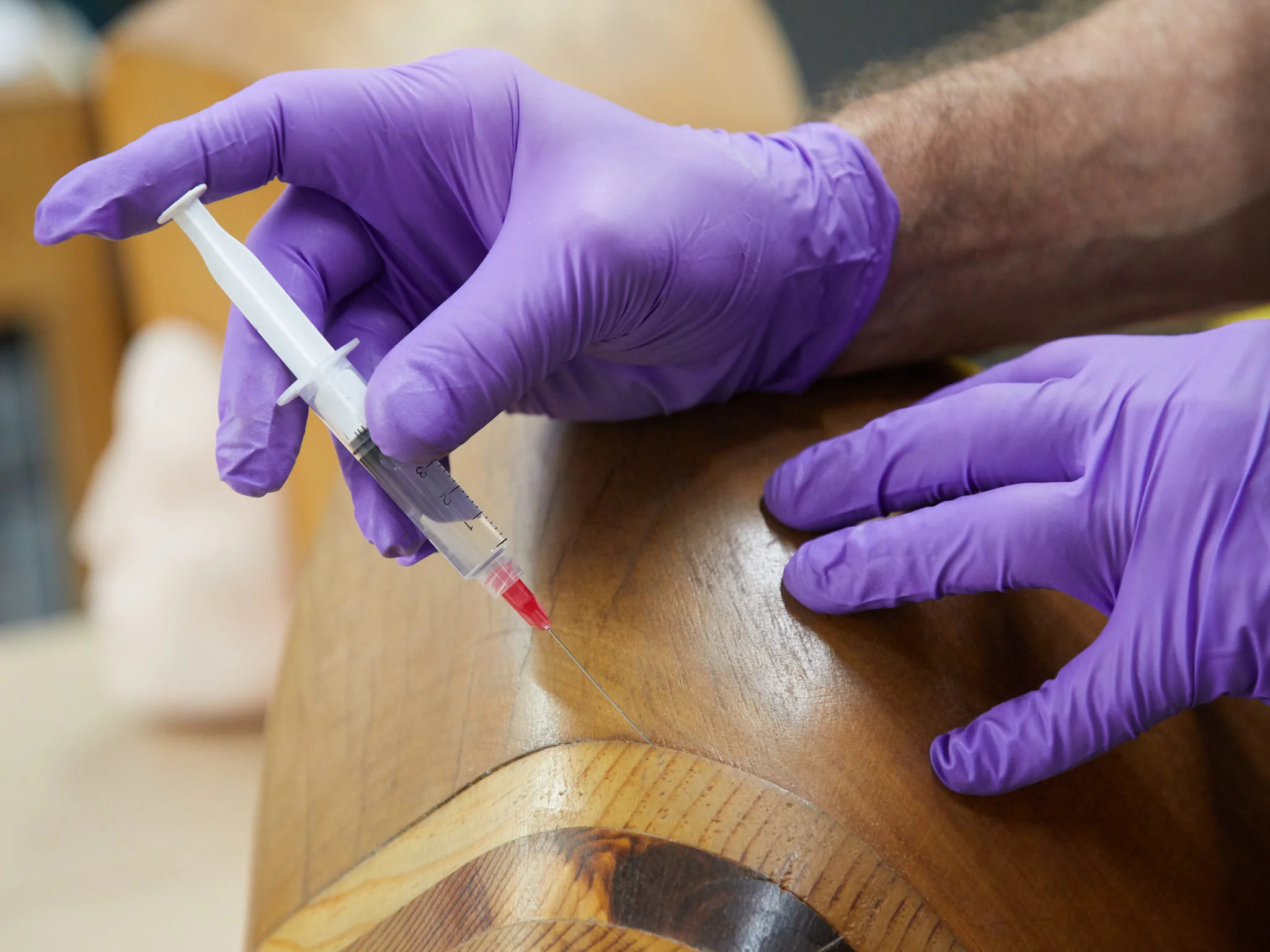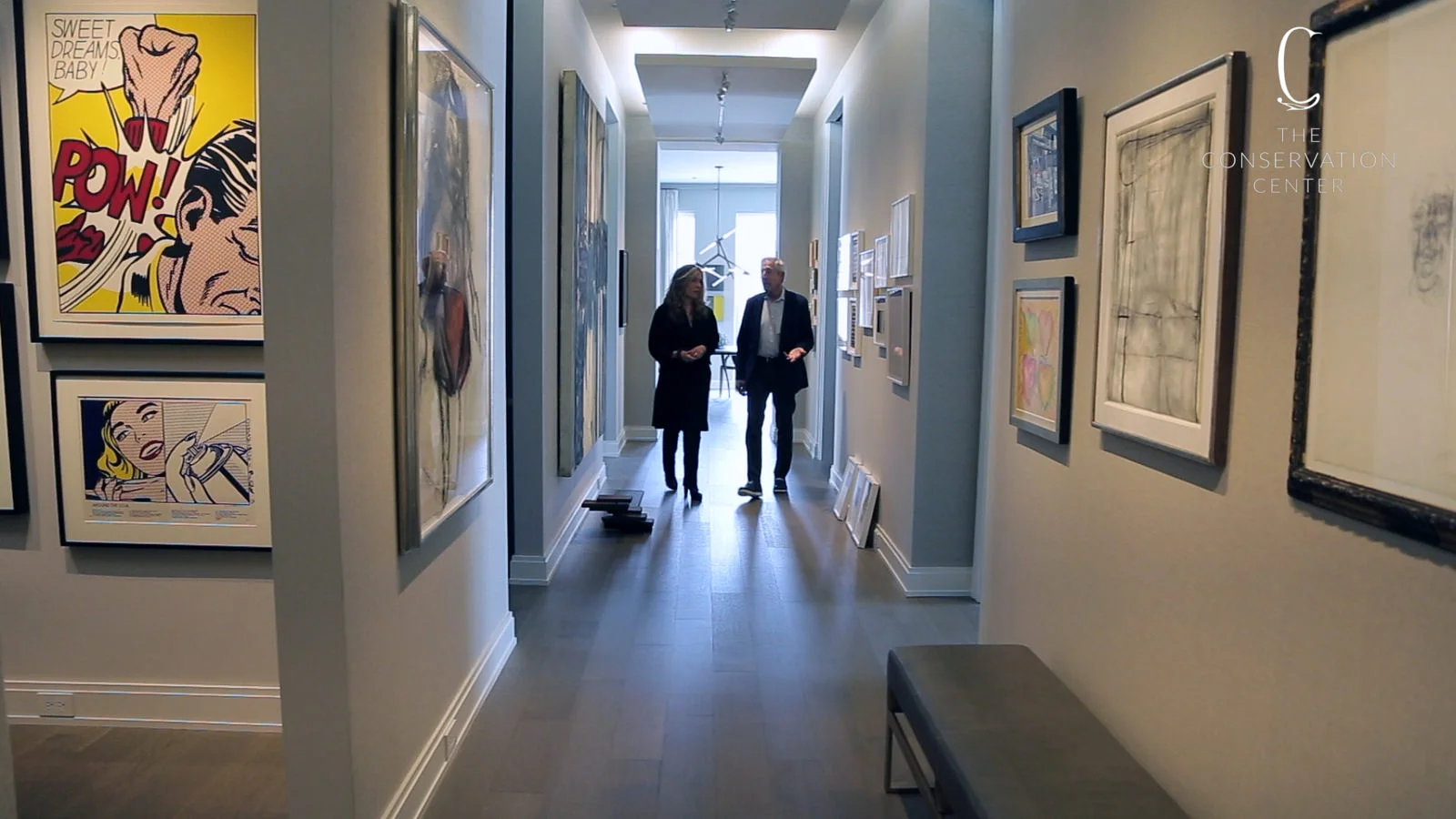Here at The Center, we are always eager to study new methods of treating objects and learn about advancements in the field. That is why we were honored to host the Chicago Area Conservation Group’s Gellan Gum Mini-Workshop on March 13th. The Chicago Area Conservation Group (CACG) is a local group whose purpose is to promote learning and exchange ideas among those interested in or responsible for the preservation of artwork and archives of all kinds.
Treating the Surreal: Giving New Life to a Water-Stained Dalí
Although he is widely recognized for his paintings, Salvador Dali completed a number of series featuring lithographs and etchings. When one of such works came to The Center for care, we were excited to work on such a special piece. This print, titled "Dalinean Prophecy", is number 8 of 25 in a series called “Imagination and Objects of the Future”.
Organization and Conservation: The Center's Inventory Process
Organization and efficient inventory management are of the utmost importance here at The Conservation Center. It is critical for our staff to properly record each piece as it enters and exits our facility, especially with the recent influx of delicate items from our disaster response efforts. So how do we stay organized?
New Treatment Techniques: Conserving a Photo Canvas by Balthasar Burkhard
When this piece first came to The Center, it was rolled on a tube and our client thought it was a painting. However, it wasn't long before the work’s true story began to unfold. Our client had recently purchased the large-scale piece from its long-term owner and knew the work was in need of care. The piece had been on display in a private residence for many years using metal clips at the top two corners. The installation on the wall was similar to how the artist had displayed the work in previous exhibitions. The corners where the sheet had been hung exhibited areas of stress and tears. These same areas exhibited what appeared to be oxidized rust stains that were caused by the metal clips.
A Dramatic Scene and a Minimal Treatment: Conserving an Irving Penn Photograph
When this piece came to The Center, we knew there was a story behind it. When we asked our client, he was happy to share. “The work is from 1946, and is part of a series of photographs that Irving Penn did for Vogue,” our client explained. The photograph features Maurice Tillet and Dorien Leigh, both famous in their time but for very different reasons.
Parks and Conservation: The Dubuque Museum of Art's Architectural Drawings
From professor and poet to author and architect, Alfred Caldwell’s long career led him on a varied journey with many paths. While Caldwell is most commonly known for his landscape designs, he also spent time working as the Superintendent of Parks in Dubuque, Iowa, as well as a professor at Chicago's Illinois Institute of Technology. Recently, these two locations from Caldwell's past met again when the Dubuque Museum of Art brought more than 80 architectural blueprints to The Center for treatment.
Timeless Design: Conserving Irving Harper's Compass Clock
When this piece came to The Center for treatment, we knew it was only a matter of time until we discovered the story behind it. After several conversations with the owner followed by some research on our end, we discovered that the clock was designed by Irving Harper for the “Motion Notion” series in 1959-1960. Often referred to as the “Compass Clock”, the timepiece was produced by George Nelson & Associates, where Harper worked as a designer for nearly seventeen years.
Take Two: Treating an Early Marisol Scene in Phases
Maria Sol Escobar, otherwise known as simply Marisol, was born in Paris to Venezuelan parents. She would later find a home in New York city, where in time her unique and varied artistic talents would make a significant mark on the art world. In the 1950s, she worked out of a small loft studio that she shared with a man name Richard Buzzle. In the evenings, she would borrow Richard’s tools. They became friends, and when it came time to part she made him a gift. The gift stayed privately within Richard’s family and was passed down through generations but never publicly exhibited. Years later, it would resurface when mentioned in a 2014 volume about Marisol’s career titled Marisol: Sculptures and Works on Paper. Most recently, it reappeared again when Richard’s daughter and granddaughter brought it to The Center for conservation.
Photo Essay: “A Day in the Life” at The Center, Fall 2017
From quick triage treatments to long on-site hours, the past few months at The Center have been full of surprises. To wind down a busy season, we are bringing back our reoccurring “A Day in the Life” Photo Series. Browse the images below to see what our conservators, account managers, and shipping team have been up to both inside The Center's Chicago laboratory and beyond.
Art in the Public Eye: Treating the Fascinating Collection of Modern Art Sculptures at The Kentucky Center
This past August, two conservators from The Conservation Center traveled to Louisville, KY to conserve the vibrant collection of public art on display at The Kentucky Center for the Performing Arts.
The Kentucky Center seeks to cultivate the artistic scene in Louisville by providing programming ranging from music and theater performances to numerous outreach and education services, The permanent artworks displayed throughout The Kentucky Center feature a number of notable artists including Alexander Calder, John Chamberlain, Edgar Degas, and Joan Miro.
Send In The Conservators: Saving Circus Memorabilia
This spring at The Center, the circus was in town and you won't believe your eyes at the amazing transformation of one client's very special family heirlooms. The client's maternal grandfather, along with his father and grandfather, were part of the Galetti’s Circus, a circus that toured Europe and America in the late 19th century. The client's relatives were responsible for feeding and caring for the famous performing monkeys as the circus traveled.
The Preservation of Words: Conserving a Collection of Historical Books
At The Conservation Center, we are fortunate to have the opportunity to learn about the personal histories and meanings of the pieces and collections that are brought to us for treatment. Each piece that comes to us has a unique story to tell. When we recently received a collection of rare books damaged in a violent storm and learned about their importance to our client, we were honored to assist with the conservation of the pieces and preservation of the history and meaning they held.
Our client, an avid book collector, sought out a five-volume collection, Norman Conquest of England, after learning more about his ancestry through DNA testing. He found that he had Celtic, Scandinavian, and Viking origins. This spurred his deep interest in learning about the history of these cultures, and encouraged him to add to his book collection with rare, historical books on these subjects.
The Center's 2017 EXPO Installation
Robert Motherwell: Float Washing, Hinging, and New Housing
Untitled was brought to The Center to address age-related issues and improper housing. The sheet had been hinged directly to a linen mount and there was select off-gassing onto the glazing from printed passages of the black ink. The overall sheet exhibited darkening due to age-related discoloration caused by the presence of the linen-lined support.
Marisol Escobar: Harold Washington Library's Women Leaning
Marisol was a Venezuelan-American active in the New York art scene in the 1960s. Influenced by both her contemporaries and Pre-Colombian figures, Marisol was known for assembling figurative wooden sculptures using a variety of media.
Due to the unique media in Women Leaning, these figures were treated by The Center’s Objects, Furniture, and Paintings Departments. The figures exhibited areas of loss, and assorted condition issues such as gouges and shrinkage splits.
Roy Lichtenstein: Cleaning Early Works
Currently, the painting is undergoing surface cleaning to remove grime and accretions that have built up on the piece over time, with the right half having been cleaned, and the left half still awaiting treatment. The reverse of the painting will also be cleaned, using a soft brush and vacuum. To complete treatment, conservators will continue to locally consolidate areas of flaking paint, and to fill and texture losses in the painted surface. Inpainting will also be carried out in areas of loss and abrasion, using reversible conservation paints.
Richard Tuttle: A Collaborative Repair
Adhering to the Visual Artists Rights Act of 1990, The Center collaborated with Richard Tuttle to determine the best treatment methods for the works, Blue/Red (white) and Blue/Red (x-bullet). After transporting the pieces to New York for the artist to review and approve the proposed treatment, Tuttle decided that surface cleaning was not necessary.
Maneuvering Through Moving Damage: One Client's Journey
It was the middle of a hot July, and Tom Reiss was in the process of moving across the state of Michigan to resettle his home closer to the lake. When the hired moving company unloaded his collection of fine antique furniture and heirlooms from their truck, Tom was astonished by the way his pieces were packed and the manner in which they were being handled and unloaded.
The Center's New Space: State-Of-The-Art Storage For Art Of All Kinds
We are pleased to announce the acquisition of two additional storage facilities, located just blocks from our 400 N. Wolcott main location. With the addition of these spaces, we have also expanded our shipping and art handling team to allow us to not only offer more state-of-the-art secure storage, but also to continue to expand our dedicated and professional team to meet the growing demand of our clients’ public, private, and commercial collections.
Linear Harmony: Exploring and Preserving the Collection of Buzz Ruttenberg
Buzz Ruttenberg, a passionate collector and an active member of The Conservation Center’s Advisory Board, recently invited our CEO Heather Becker into his home for a conversation and a tour.





















